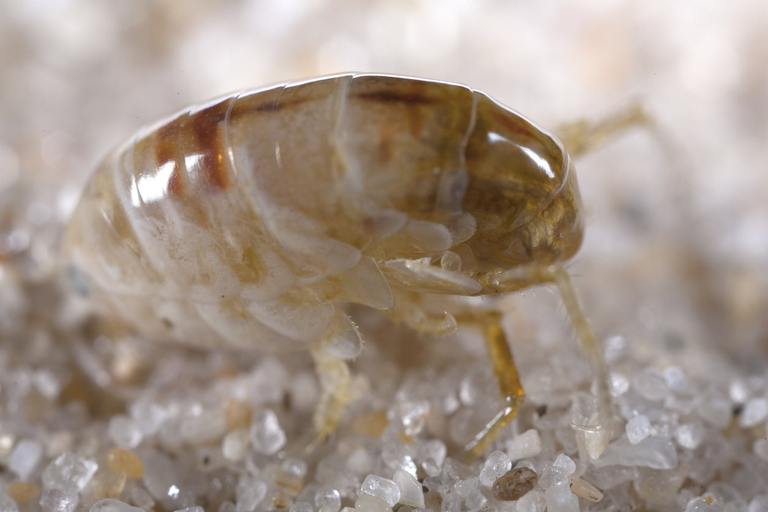Sand Fleas: What Are They and Why Should Homeowners Care?
Published: September 19, 2024

Introduction
When most people hear the term "sand fleas," they might think of annoying pests encountered during a beach trip. But for homeowners in coastal cities like Southwest Florida and Houston, Texas, sand fleas are more than just a vacation nuisance — they can become an unexpected issue right in your backyard. Understanding what sand fleas are, how they behave, and the risks they pose can help homeowners better protect their families and properties from these persistent pests.
What Exactly Are Sand Fleas?
Despite the name, sand fleas are not actually fleas. The term commonly refers to a variety of small crustaceans, especially those in the Talitridae family — also called beach hoppers or sand hoppers. These creatures are more closely related to shrimp than to true fleas, although they can deliver irritating bites.
Sand fleas are sometimes confused with biting midges (no-see-ums) or sand flies. While these biting insects share similar habitats and behaviors, they are biologically different and require distinct control methods.

Physical Characteristics
Sand fleas range in size from 1/4 inch to 3/4 inch and have shrimp-like bodies, multiple legs, and long antennae. Their coloration blends with sand and soil, making them hard to detect around the home. During the daytime, they often burrow into shaded or damp areas in yards, landscaping beds, or under outdoor furniture.
Where Do Sand Fleas Show Up Around Homes?
In cities like Fort Myers, Naples, Sarasota, and Houston — where humidity and coastal proximity are common — sand fleas and their lookalikes can thrive in outdoor home environments. Homeowners may encounter them:
- Under Decks or Patios: Shaded and moist spots offer an ideal microhabitat.
- In Mulched Beds or Damp Soil: These areas retain moisture and attract decaying organic material.
- Near Water Features: Fountains or poorly drained lawns can harbor sand flea populations.
- At Entry Points: Open windows, doors, or cracks near the foundation may provide access indoors.
Homeowners who live near canals, retention ponds, or marshy areas are especially prone to activity.
Are Sand Fleas Dangerous to Families and Pets?
While sand fleas are not typically disease carriers, their bites can still cause considerable discomfort — especially to sensitive individuals or children.
Recognizing Sand Flea Bites at Home
Bites usually occur around the ankles, feet, or lower legs. Symptoms may include:
- Intense Itching: Often more persistent than mosquito bites.
- Red Bumps or Welts: Especially common after yard work or gardening.
- Blisters or Secondary Infections: In more severe or untreated cases.

Though rare, some related species like sand flies have been linked to disease transmission. According to a 2023 report by NPR, sand flies are now considered endemic in parts of the southern U.S., including Texas and Florida. Additionally, research from the NIH shows that proteins in sand fly saliva may impact human immune response, complicating reactions to bites.
How Can Homeowners Prevent Sand Fleas?
For Florida and Houston homeowners, consistent yard maintenance and environmental awareness can dramatically reduce sand flea populations.
Home-Based Prevention Tips
- Eliminate Standing Water: Regularly drain flowerpots, birdbaths, and clogged gutters.
- Use Outdoor Repellents: DEET-based products or natural oils like cedarwood can offer some deterrence.
- Keep Landscaping Trimmed: Reduce shade and maintain airflow by trimming bushes and hedges.
- Install Screens & Seal Cracks: Prevent indoor access through doors, windows, and vents.
- Avoid Yard Work at Dawn or Dusk: These are prime activity times for sand fleas and similar pests.
Routine outdoor treatments and property inspections can offer added peace of mind, especially during the warm, wet seasons common in both Florida and Texas.
Pet Owners: Be Vigilant
Sand fleas can latch onto pets' paws or fur. After time outdoors, especially in damp yards, rinse pets with clean water and monitor for scratching or irritation.
How to Treat Sand Flea Bites at Home
Despite prevention efforts, bites can happen — especially after outdoor play, gardening, or entertaining.
- Clean the Bite Area: Wash with warm water and mild soap.
- Apply Anti-Itch Cream: Hydrocortisone or calamine can soothe irritation.
- Use Oral Antihistamines: These help reduce swelling and itching.
- Don’t Scratch: Scratching may cause infections or delay healing.
- Monitor for Infection: If the bite worsens or becomes swollen and red, consult a healthcare provider.

Do Sand Fleas Infest Homes?
Unlike fleas or bed bugs, sand fleas typically don't infest indoor spaces. However, they may wander inside if environmental conditions outside drive them toward moisture or shelter. Homeowners might notice them around windows, patios, or basements (in the case of crawlspaces or slab cracks, since basements are rare in Florida and Houston).
In these cases, professional evaluation helps identify the source and determine the most effective solution. Subtle signs of recurring pest presence should never be ignored — early action helps avoid prolonged discomfort.
Professional Support for Sand Flea Issues
In coastal climates like Florida and Houston, outdoor pests are a year-round concern. If you notice persistent bites or recurring sightings of small, jumping insects near your home, reaching out to a local pest control expert can bring clarity. Experienced teams can assess your property’s specific risk factors and create tailored treatments that support long-term relief.
Often, ongoing pest services keep things in check before they get out of hand — and offer the reassurance that your family and pets can enjoy the yard without worry.
Final Thoughts: Protect Your Home From Sand Fleas
While the name might suggest a beach-only problem, sand fleas and their close cousins can become unwelcome visitors to your Florida or Texas home. By understanding their behavior, watching for signs, and taking a proactive stance with prevention and professional guidance, you can keep your living space comfortable and safe.
Whether you're relaxing in your backyard, tending your garden, or playing with your pets outdoors, taking steps to control biting pests helps ensure your home is a sanctuary — not a feeding ground.